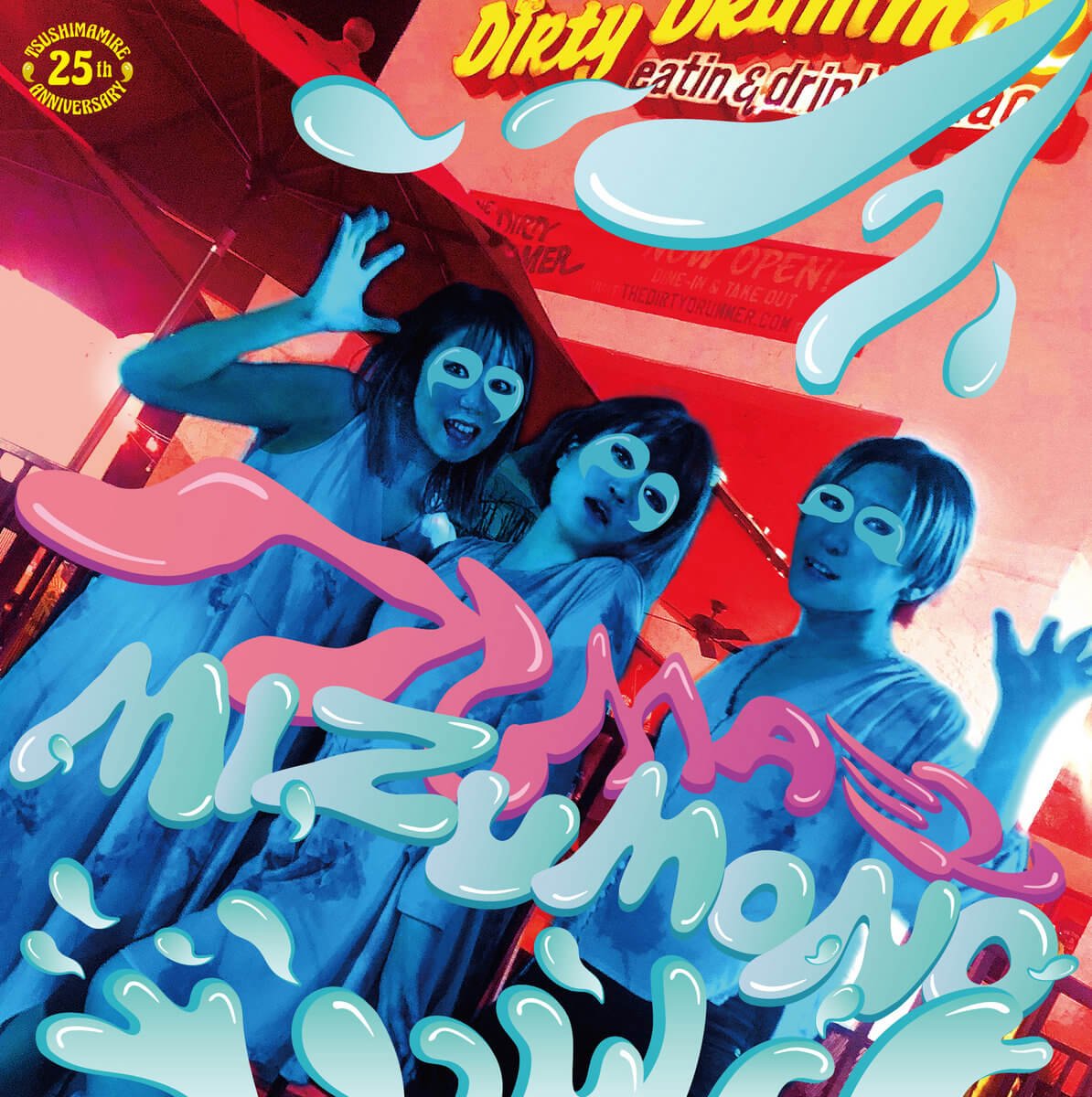Recently =LOVE released the music video for 虹の素 (Element of the Rainbow). This versatile and talented group, who will commemorate their second anniversary later this year, continue to grow in confidence and ability. Seemingly becoming a more potent version of themselves with every release. Now, while an idol unit releasing a new video might not in itself seem to be that unusual, this video shows a new side to their repertoire and brings with it an altogether much more unexpected surprise – The video only features two of the groups twelve members.
It is often the case with a lot of idol groups, especially the ones with larger unit sizes, that while you might be able to see which members are, perhaps, the stronger singers and which members work better singing in harmony with other members, it can be difficult for individual members to shine and truly show their full ability as a performer. This song is an opportunity for Maika Sasaki and Iori Noguchi to do just that and, in no small way, they seize the opportunity with both hands and really show just how much talent and the future potential they have.
The song itself is an emotionally charged rollercoaster which in some of the basic elements of the music reminds me of the power and feeling that came along with the first song of theirs that I heard, last year’s single 手遅れcaution. It is clear from the very first lines of the song that float to the ear that the girls are not short on ability, a feeling that becomes more certain as the song progresses. The interchanging solo vocals of Maika and Iori, along with the strong harmonious combinations, delivering a potent mixture of anguish, despair and hope straight into the listener’s heart and mind.
The video is split very clearly into 2 distinct moments in the story of our two protagonists and it shifts between them both quite fluidly throughout the song. Both scenes are set up to utilise various aesthetic devices to distinguish not only the change in the location, but also a change in time and a change in the mood that the scene is trying to convey in its portrayal.
The first of these two scenes sees Maika and Iori as two schoolgirls on a rooftop in a world almost completely devoid of colour, drab coloured rooftops filling the background and a heavy, leaden sky filled with imposing rain clouds stealing away the colour from the surrounding buildings combining together to give the impression that we are witness to something incredibly sad.
The two girls play out their roles exquisitely, the anguished and sometimes frantic displays from Iori and the uncertain, somewhat nervous, behaviour of Maika coming together perfectly as they move about the rooftop with tearful expressions. It is a scene that conveys the intense feeling of desperation and heartbreak that is being experienced as these two friends, indeed possibly two young people in love, are seemingly about to part company, possibly for the last time, and all the fear, pain and uncertainty that comes along with moments like these in everyone’s life. It is something I think that has been designed to resonate with the viewer, to bring about the memory of some lost friendship or love and evoke empathic feelings for the two girls as they say goodbye.
The interactions between them continue throughout the rainfall, with a nice piece of symbolism as the umbrellas are discarded, as if the final barrier that is preventing them from expressing what they are feeling has been removed and thrown to one side.
The pair share fleeting moments of intimacy with a moment sitting close to each other, back to back as though they still can’t face what is happening and then a desperate, tearful and distraught hug at the edge of the rooftop, but both moments are only brief interludes before the distance between them once again increases, not only literally as they move apart on the rooftop but also as they begin to realise the inevitability of what is to come.
The second scene is immediately very noticeably different from the first. After the dull and dreary rooftop encounter where the girls said their farewell, we are greeted by a much more vibrant scene. After dark in a city somewhere, the girls are wearing make-up and also dressed in a much more colourful and mature clothing, giving the impression that this encounter is taking place many months, or perhaps even several years after their heartbreak. The streetlights and the change to the colour of the girl’s make-up and clothes make the scene jump out of the screen in comparison, the sudden change in aesthetic immediately giving a much warmer, hopeful feeling.
We now follow Maika and Iori, now grown up, as they are walking through the city. Both of them on their way to some unknown location, both of them unaware of the encounter that is approaching. There is a feeling as you watch the pair walking that, while they have continued with their lives, they are still somewhat haunted by their past, with both of them seemingly thinking about something distant and unseen.
Then there is the encounter as the pair walk past each other on a raised walkway amongst the crowds of the evening commuters. They walk past each other for several steps and then they stop, as if the memory of a familiar face passing by them has suddenly come into their mind. The scene is shot impeccably, with all the other commuters removed. In that one moment, as they stop, there is nobody else in the world – they are alone once again like they were on the rooftop.
There is a moment of hesitation, it is as though the feelings from the rooftop have come back into their hearts like a flood and there is no longer any certainty about anything. Did they really see the other person at all? Do they want to risk opening themselves up to the pain of the farewell by turning around to see if the other one is there looking at them?
You can see these thoughts and the uncertainty they bring playing across both of their faces as they wait, perhaps building up their confidence to turn and face each other once again. Finally, and deliberately slowly, they begin to turn as the song builds to its finish a look of nervous hope playing in their eyes.
After the conclusion of the song, this scene also comes to a close with Iori faintly being heard to call out to Maika as she finishes turning around, both of them looking at each other for a moment before smiling. This ending gives a sense of hope for them, that there is a happy ending to their story and that the pain and turmoil of the past will not be the defining moment for them after all. But, combining this warmer sentiment with the more striking visuals, the brighter colours etc, the scene becomes something much more. It is their shining light of hope, a rainbow against the savage storm of their farewell.
The two scenes are deliberately different, the different aesthetics being used do not distract from the story that is being told. In fact, they enhance the feeling that is being expressed and allow the story to come across visually as well as through the music.
The strength of the composition, not only of the video, but also of the song and of the performance of Maika and Iori, remains apparent throughout. It is not lost in amongst any unnecessary dance routines or big dramatic effects. Indeed, the simplicity of it all is one of it’s biggest strengths, boosting the overall outcome and allowing Maika and Iori to do what they do best.
Rating: 88/100













